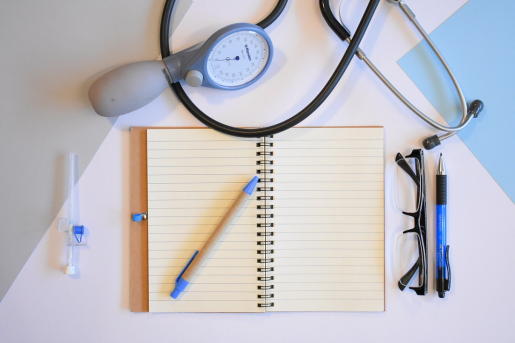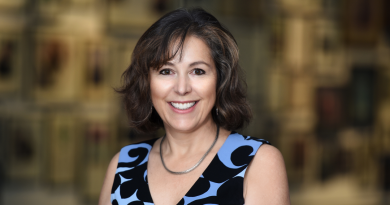The things you learn: My medical school journey
First, you learn about faith. It’s a strange thing to encounter at the beginning of a profession rooted in hard science, but you learn nonetheless. Faith in the process of trying, stumbling, learning and trying again. Faith in yourself. You are introduced to medical school with a towering anatomy PowerPoint and three more like it that week and you laugh incredulously and think, “I’ve finally found my Waterloo.” They say, “jump!” and even though you can’t possibly make it, you haven’t made it this far to stop. You leap like your life depends on it. Miraculously, your feet find land. You pass.
You learn about pain, your own and your patients’, and how to describe, codify, and convey it to others. How to rate it and distinguish its forms, from the pressure-like agony of heart attacks to the thunderclap headache of a subarachnoid hemorrhage. When you see your first patients with your preceptor, you sense that a part of their pain will always be unknown to you, separated by the space between two lives, doctor and patient, and the inadequacy of words to bridge it.
But until you have patients of your own, none of these things are as real to you as the dull throbbing ache of a migraine after 600 Anki cards, the gut punch of failing your first MMSCE, or the grinding exhaustion of taking a test on two hours of sleep. In time, those setbacks become small and distant. You realize that every kind of pain passes in the end.
You learn about death in formaldehyde and in the flesh – the bittersweet poignance of a good death, and the violence of a sudden one. When you first look upon your cadaver, when months later you come to the awful realization that you too will die but you don’t want to die, you understand why this kind of terror isolates people. You leave your body and don’t come back for three months. You come back sobered and changed – the rat race of competing, achieving, and displaying suddenly childish.
Your 85-year-old patient goes to inpatient hospice, and you try to hide tears of beauty and tragedy as you watch her grandchildren gather around her bedside. You do your first code and can’t forget the way his bones grated under your palms as you counted compressions with words that seem hysterically wrong in the moment – “staying alive, staying alive, ah, ah, ah, ah.”
You find new kinship with your patients who are scared and alone – the teenagers with cancer, the bereaved family members, and it is suddenly so important to make them realize that they are not abandoned. “There is a future,” you say, “and you’re creating it right now, with the choices you make today. I know it’s overwhelming, and everything’s coming too fast, but in this moment, you are stronger than you think, and you have more power than you know.”
You learn about the system that you want to enter – its idiosyncrasies and hierarchies, its achievements and often, firsthand, its failures. “There’s nothing so sacred as an American with chest pain,” your attending says during rounds, “but as a society we don’t give a crap about people with substance abuse.” When Mr. W, the lung transplant patient, tells you in between coughing fits, “The government is trying to kill all of us, they don’t care,” you realize it’s not paranoia if it’s history. He is a Black man who survived Katrina, and as his trembling hand sends shivers up his IV line, something clicks into place inside you.
Your med student insecurities fall to the side. You become a journalist getting collateral from his family members, an archeologist within the depths of the media file in Epic, a price-checker on GoodRX, and a thousand other roles just to turn the rusty gears of the American healthcare system for him, because this man is alive and scared, and the thought of him slipping through the cracks like all the others fills you with a pulsing, nameless anger. You spend hours at his bedside trying to understand and to miss nothing.
You tell what you know to anyone who will listen – nurses, residents, attendings, and in every progress note you write. Sometimes it helps. He gets better, and when he is discharged and holds your hand on the way out and says, “Thank you.” You feel a warmth bloom in your chest, and you realize that that you could chase this feeling for the rest of your life.
You learn that you carry the power of humanity within you: your smile, your posture, the way you touch their arm or their shoulder. You begin to feel the ebb and flow of clinical conversations – how to phrase questions like an open door, inviting the patient to fill the room beyond with their truth, how the right questions can give them permission to express fears they have not yet dared to admit to themselves.
You counsel family members and realize that the way through to them is not just science but the life and poetry inherent in all things, including science. Tears of emotion become opportunities, and numb, thousand-yard stares become challenges.
When a virus sweeps the country, and you’re forced to don two masks and a face shield, you feel the loss of intimacy like a missing limb, just one more human thing that this crisis has taken. You learn to compress all the expressions you have into your gaze. And when you first meet Mrs. N, a 65-year-old liver transplant patient, as you try to talk and take notes and breathe hot stale air and see through your foggy face shield, you hope, desperately, that she sees you in your eyes.
She is waiting for so many things – for her strength to return, for a visit from her husband who can’t visit her, and for a call telling her, “we’ve got a liver for you,” and the implicit permission to live in the future once more. You observe her in her room early next morning before rounds, and as she looks off into the half-light around her bedside, the inadequacy of the word “loneliness” echoes in the silence. You knock, walk in, and she looks over her shoulder. “Hello Mrs. N!” She recognizes you!
Despite liver failure and a pandemic, despite your mask, face shield and creepy plastic gown and baggy gloves, she smiles— one of those crinkly smiles that creeps up into her eyes and shines brighter that the dawn filtering in through the blind – and in that moment, I swear, you can only stand and wonder: Maybe, just maybe, this is where I belong.
-By Ari Gao, third-year medical student at Baylor College of Medicine




great